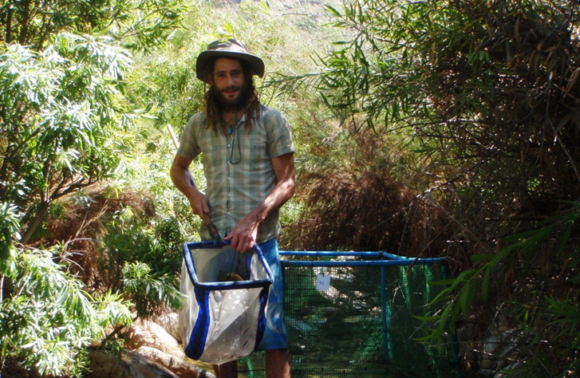Genetic diversity has long been considered a cornerstone of biological invasions. It is generally assumed that populations of an invasive alien species will have lower genetic diversity in the new invaded area when compared to populations in the native range. This is thought to be the result of small size of founding populations and genetic bottlenecks experienced on arrival in the new area. This low genetic diversity, in turn, is expected to decrease the colonisation potential of the alien species and ultimately, lead to a decrease in population fitness and adaptability to the invaded range.
To test this hypothesis and unravel the demographic history of the invasive populations, studies usually compare the genetic diversity levels of a species across its native and invasive ranges. Most of these studies, however, focus solely on contemporary samples, relying heavily on the premise that the historic population structure within the native range has been maintained over time.
This assumption was recently tested in a study by Genevieve Diedericks, a former C·I·B PhD student, and C·I·B Core Team Members, Cang Hui and Olaf Weyl, in collaboration with Sophie von der Heyden and Romina Henriques, both from the Evolutionary Genomics Group at the Department of Botany & Zoology, Stellenbosch University. Using the notorious South African freshwater invader, the smallmouth bass (Micropterus dolomieu) as study organism, they compared the genetic diversity of native USA (contemporary and historic — dating back to the 1930s when these fish were first introduced into SA) and invasive SA (contemporary) smallmouth bass populations.

(Photo credit: Genevieve Diedericks)
Their study showed that genetic diversity does in fact differ across both spatial and temporal scales, with the historical native range displaying higher levels of genetic diversity when compared to both contemporary native USA and invasive SA ranges. In addition, the invasive SA range displayed significant levels of population structure, whereas both historical and contemporary native USA populations revealed higher levels of admixture. By incorporating historical samples into their analyses, Diedericks and colleagues, not only demonstrated that a historic introduction from the USA had occurred, but that undocumented introductions of this species have occurred in more recent times as well.
The findings of the study highlights the importance of incorporating historical DNA when examining contemporary genetic diversity as it allows one to monitor the temporal changes in genetic diversity across generations. It also underscores how the use of historical DNA can increase the chance of detecting subtle changes frequently overlooked by studies focussing only on contemporary data. These findings may be of particular importance to studies conducted on taxa for which there is a reason to suspect temporal fluctuations in genetic variation, such as highly exploited taxa or species often associated with human-mediated dispersal.
Read the paper Diedericks, G., Henriques, R., von der Heyden, S., Weyl, O.L.F. and Hui, C. 2018. The ghost of introduction past: Spatial and temporal variability in the genetic diversity of invasive smallmouth bass. Evolutionary Applications. https://doi.org/10.1111/eva.12652
For more information, contact Genevieve Diedericks at diedericks.genevieve@gmail.com



